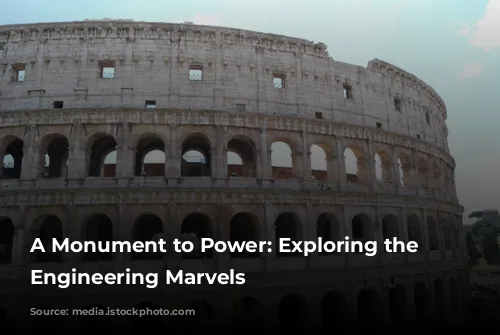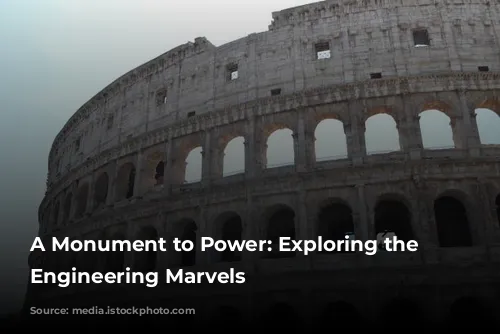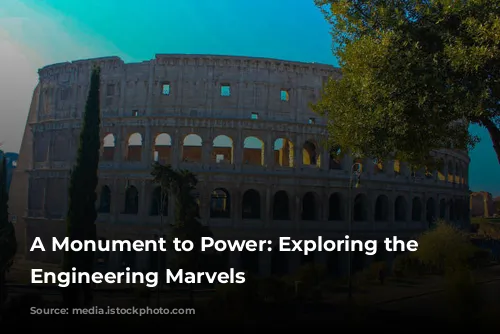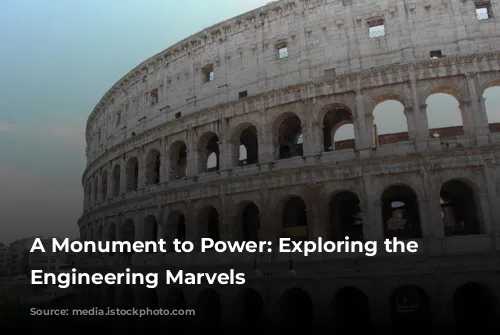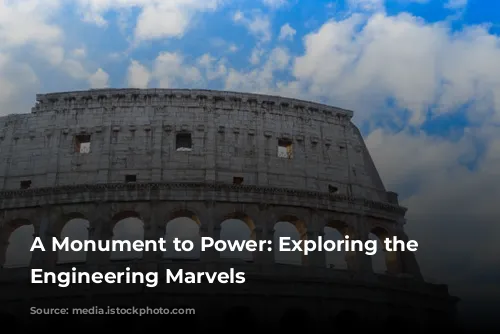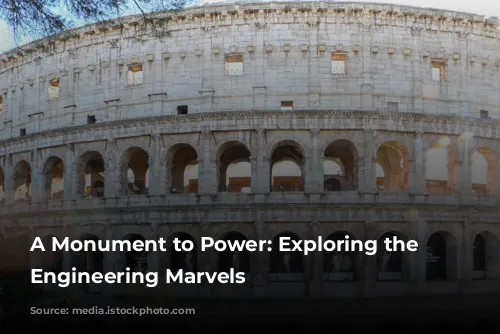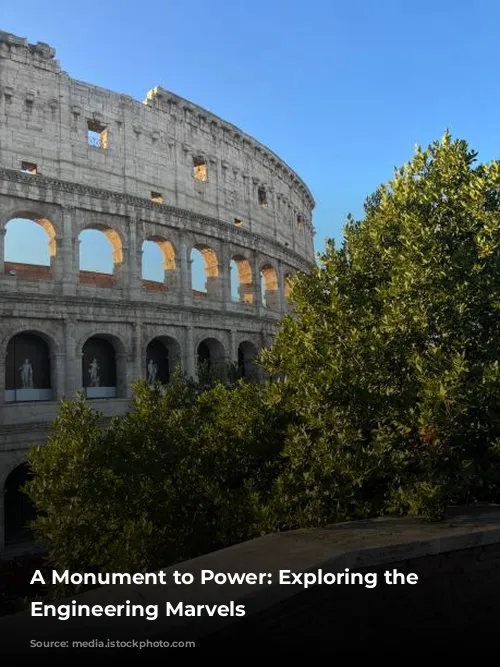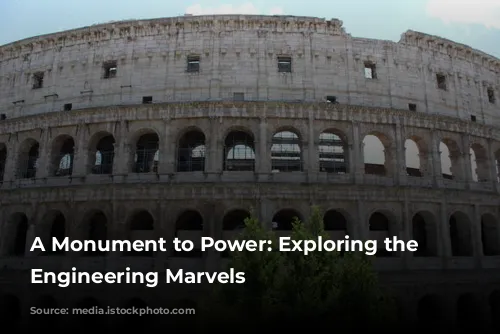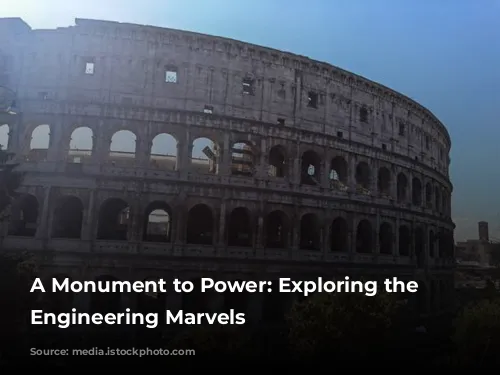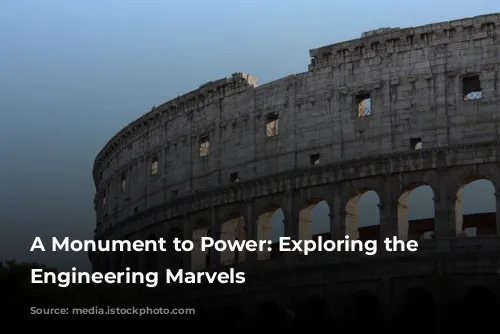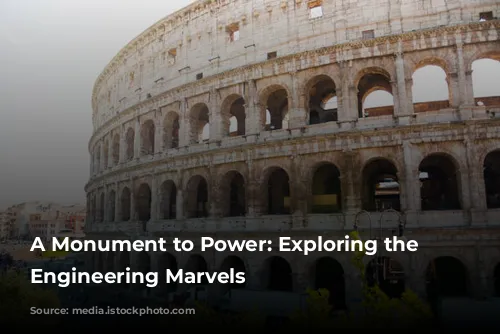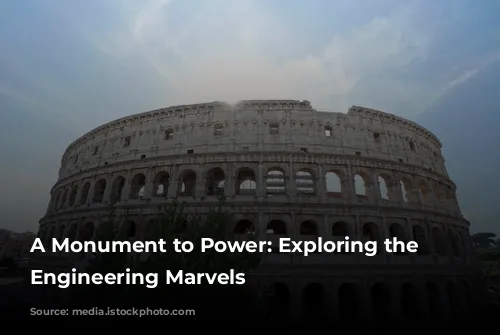The Colosseum, a titan of architecture in ancient Rome, stands as a testament to Roman engineering prowess. It’s a massive, complex structure, a stark contrast to the temporary, wooden amphitheatres that came before. The Colosseum’s immense scale and permanent construction set it apart as the second and largest amphitheatre in Rome. While the Circus Maximus was larger and primarily used for chariot races, the Colosseum hosted a spectacle of blood and spectacle, including animal hunts, executions, and gladiatorial combat. The elliptical shape of the amphitheatre was carefully designed to ensure every seat offered a clear view of the arena, providing a captivating experience for spectators.
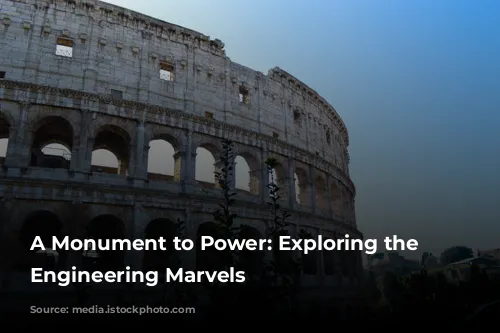
Layers of Design: The Colosseum’s Exterior and Interior
The Colosseum’s exterior is a masterpiece of design. Its four levels, each adorned with 80 majestic arches, create a visually stunning facade. These arches are not just aesthetic embellishments; they are the architectural backbone that allows the Colosseum to reach such immense proportions. The arches also evoke the image of triumphal arches, reflecting the Colosseum’s construction from the spoils of Judea, a powerful reminder of Roman conquest.
Moving inside, the four levels provide ample seating for spectators, accommodating an estimated 50,000 people. The social hierarchy of ancient Rome was mirrored in the seating arrangement, with the elite enjoying the prime views closest to the arena and the commoners positioned higher up. The Colosseum’s intricate vaulting system served both as a structural foundation and a system for efficient crowd management. Spectators were carefully funneled throughout the arena, ensuring social segregation was maintained. This meticulous system prevented mixing of classes and created a structured experience for each social group.
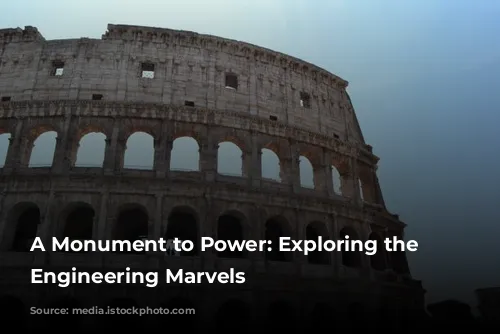
Hidden Wonders: The Colosseum’s Beneath the Surface
Beyond its grand exterior and extensive seating, the Colosseum boasts hidden depths that further showcase Roman ingenuity. The vela, massive canvas awnings that stretched across the arena, provided shade for spectators, protecting them from the scorching sun during the games. The vela, requiring a team of skilled sailors to operate, highlight the scale and complexity of the Colosseum’s design.
But the true marvel lies beneath the arena’s surface. The hypogeum, a network of subterranean chambers and tunnels, was essential for the staging of spectacles. This intricate system housed scenery, props, and even lifts that allowed gladiators and animals to make dramatic entrances into the arena. Though its original design is debated, the hypogeum provides a glimpse into the behind-the-scenes workings of the Colosseum, showcasing the Romans’ ability to craft spectacle and awe.
The Colosseum stands as a symbol of Roman power and ingenuity, a structure that captivated audiences for centuries. Its architectural complexity and innovative features continue to amaze and inspire us today, reminding us of the remarkable achievements of ancient civilizations.
